Take Fedora 43 Workstation for a spin with our hands-on review — plenty of screenshots, but don’t trample the Easter egg.
The FOSS Force Distro of the Week — Fedora 43

I just took the Fedora 43 Workstation for a spin — how’s that for a homecoming?
A little background wrapped in a full disclosure moment: Many moons ago, I was heavily involved with the Fedora Project as a Fedora Ambassador. We’re talking about the days of teen-digit release numbers, all of which were usually accompanied by a knock-down, drag-out … um … “debate” about the code name. As an Ambassador, I toured the West Coast shows – primarily the Southern California Linux Expo (SCALE), OSCON when it was in Portland, and LinuxFest Northwest – setting up and taking down the Fedora booth in each of those shows for several years.
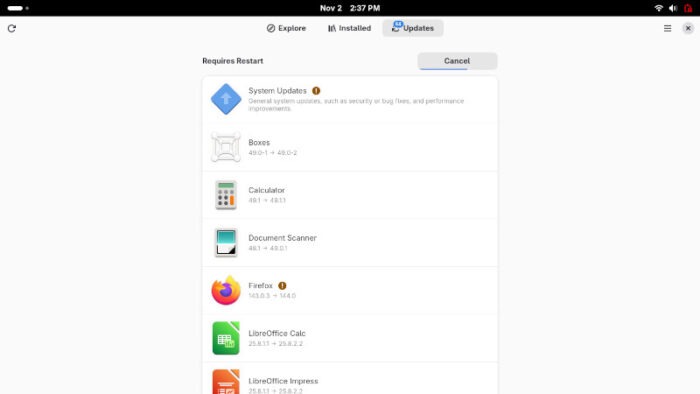
Those were the days.
Anyway, around the time of the “Beefy Miracle” release — which was about the same time they started ignoring 32-bit hardware — I sort of strayed and returned to distro hopping, leaving behind the Fedora part of my Linux journey.
Until now.
The just released Fedora 43 Workstation — with the Gnome 49 desktop, and the changes that come with it — are reasons to reconsider it as a daily user.
Installing Fedora 43
Before we start, the Fedora Project offers a wide variety of desktop environments through its wide variety of “Spins,” namely Xfce, KDE Plasma, Cinnamon, MATE, LXQt, LXDE, Sugar on a Stick (the desktop on the XO One Child Per Laptop computer), Budgie, Miracle, and Cosmic, as well as the Workstation, which is Gnome. Add to this the i3 and Sway window managers, and that’s the complete lineup of Fedora Spins available.
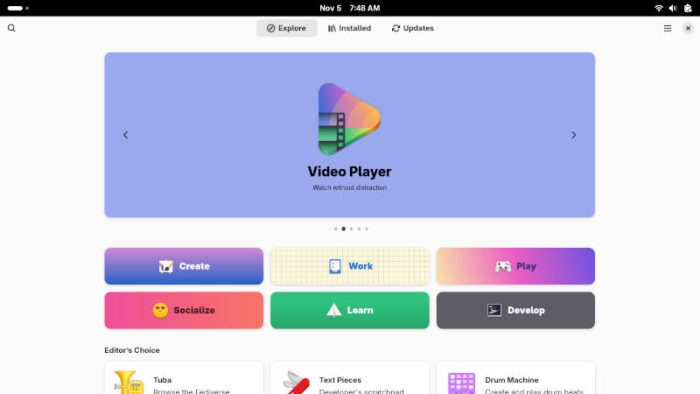
The Workstation’s ISO, like most of the other spins, is a reasonable 2.6 GB, and downloading it was a metaphorical piece of cake.
The minimum system requirements for Fedora 43 are fairly typical. You need a dual-core 2 GHz 64-bit processor, 2 GB RAM, 15 GB storage, and graphics resolution of at least 800×600. However, for optimum performance, the Fedora Project suggests you have a 2 GHz quad-core processor or better, 4 GB RAM, 40 GB or more free storage, and a 1024×768 or higher screen resolution.
To be honest, I had forgotten how much I missed the Anaconda installer, which I found has improved over the years. I should note that starting with Fedora 43, the distro is now Wayland only, and programs requiring X11 are handled through the XWayland compatibility layer. Bear in mind that X11 compatibility with Fedora will be completely gone with Gnome 50.
Once installed and the distro updated, we can now dive in to Fedora 43.
Using Fedora 43 Workstation
One of the first things I noticed on first boot is that Fedora 43 Workstation is… well, lacking in a lot of the software necessary for daily use. While Firefox is clearly installed and LibreOffice is present, that’s really it. Of course, since Workstation is based on Gnome, there are a variety of Gnome tools available, including Software, which was put to good use making up for the lack of software installed by default.
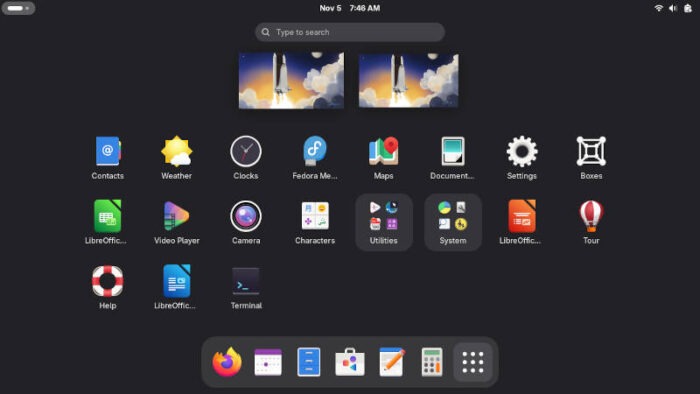
One of Fedora 43 Workstation’s many new features is the RPM 6.0 package manager, which includes a variety of security improvements: it now identifies OpenPGP keys by their full fingerprints and adds support for multiple signatures and OpenPGP v6 keys with post-quantum cryptography.
Once the preferred software was onboarded thanks to Gnome Software — including Thunderbird e-mail client, GIMP graphics editor, and VLC media player to name a few – we were ready to dive in.
Fedora 43 Workstation ships with Linux kernel 6.17, which allows for improved hardware support for modern systems. This assists both AMD Ryzen and Intel systems through smarter workload distribution for the former and multi-core scheduling and improved multitasking for the latter.
Thanks to Wayland, Fedora 43 users get clean rendering and smoother animation thanks to the triple buffering. In another visual enhancement, the distro includes the COLRv1 Noto Color Emoji fonts, which unlike traditional bitmap fonts employs a new color vector format that scales smoothly at any size, and ensures consistent, crisp emoji rendering across display resolutions.
All of this together means that using Fedora 43 Workstation is nothing if not an absolute delight. The performance of the distro is agile, and going from program to program is as nimble as it is efficient. If I were a judge — and I guess I am — everything about the distro, from its desktop with the space shuttle motif, to the clarity of the screen, to the performance of the software, would prompt me to give the developers a perfect 10 score in presentation and performance.
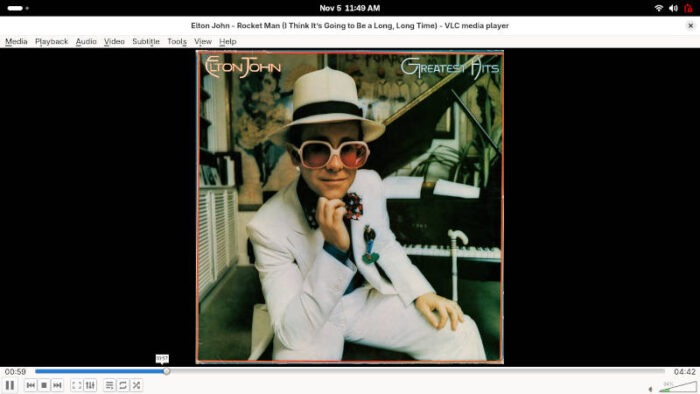
In other words, listening to Elton John while writing the article — fiddling with some of the Gnome tools while checking my email from time to time — was an uninterrupted joy offered by few other distros.
Final Thoughts
In his song “I Am… I Said,” Neil Diamond writes, “L.A.’s fine but it ain’t home / New York’s home but it ain’t mine no more.” This sums up my relationship with the Fedora Project. However it’s great to see that it’s thriving even without me.
While I resisted the urge to go to my roots – that is, the Xfce desktop environment spin, which was my go-to for nearly a decade – using the Workstation version with the Gnome desktop was still very simple and straightforward. Also, new users should feel welcomed by the Fedora family. If they run across a problem, the Fedora Project’s community is wide and varied, and a visit to the Ask Fedora user support forum will more than likely have their answer.
Because the Fedora Project has been around forever — well, since 2003, which is practically forever, experienced users would also find a home with this distro. The secret, of course, is hitting up Gnome Software for the various tools you’ll need… and voila!
The only down side: Kicking X11 to the curb in favor of Wayland is a concern — shades of how Fedora treated 32-bit systems a while ago — but begrudgingly I will defer to those who are on the front lines of development, so to speak.
If you want to give Fedora 43 Workstation a try, you can download it from the Fedora Workstation download page. If the multiplicity of Fedora Spins piques your interest, you can download from the Alternative Desktops download page.
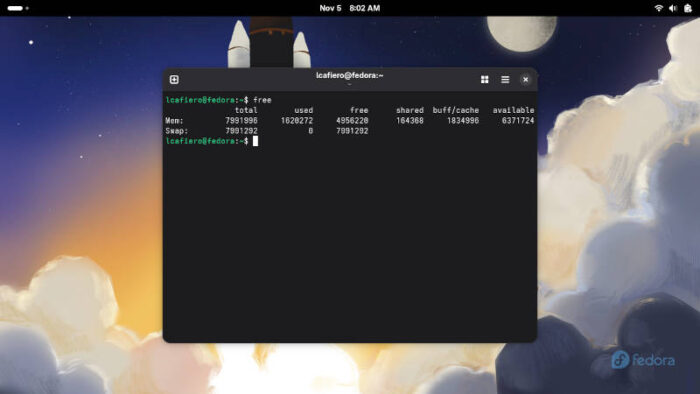
Do you have a distro you think would make a great feature for FOSS Force’s Distro of the Week? Don’t be shy—let us know! Offer your suggestions in the comments below (or use the “contact us” link under our masthead) and we’ll make an effort to make it so… No suggestion is too mainstream or too niche—let us know what you’d like to see!
Things I like about Fedora 43… |
Things I don’t like about Fedora 43… |
|---|---|
|
|
And now, for some reason, we’re in the mood for some Elton John…






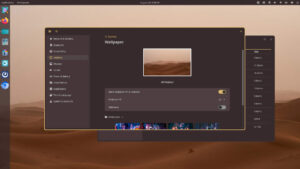

What a well-written post! You managed to explain the topic concisely without leaving out important details. The examples you used were especially helpful in making the concepts clearer. Thanks for consistently sharing quality content.